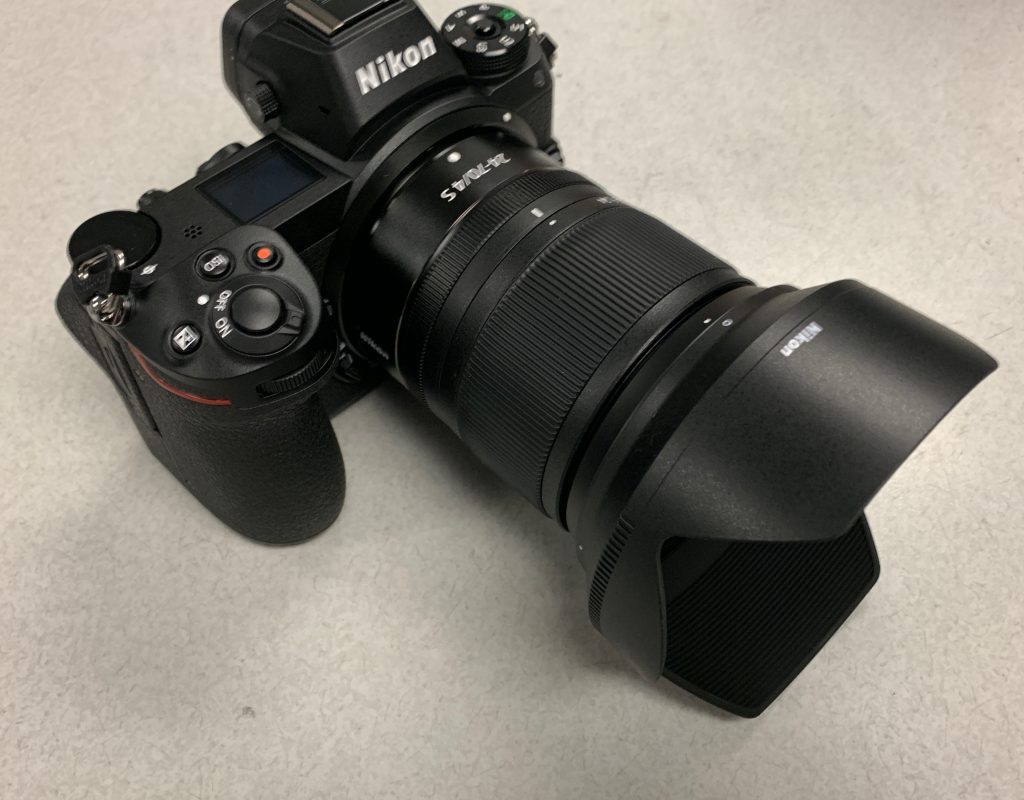The Nikon Z6 is one of two mirrorless camera options from Nikon and the one best suited for 4K video capture. Before we get started, a full review of the Nikon Z6 is a beastly burden to fit into one post so I will break down my review. This is post 1 and it will focus on the Nikon Z6 as a video camera.
It seems to me mirrorless cameras are everywhere. Which one is best? Some argue for the Panasonic GH5, SH1, Fuji, or the Sony Alpha series and now there are new options from Canon and Nikon. The debate is endless. We might have better success debating claw hammers. I am focusing on the positives and negatives of the Nikon Z6. This is not a shootout but a look at one camera.
The Nikon Z6
At the heart of this review, I will try to answer one question: why go with the Nikon Z6? The easy answers follow. Do you have a ton of Nikon Glass? Do you have a want, or need, to shoot full-frame UHD (3840 x 2160) with externally recording to 10-bit files? Do you want or need, eventually, ProRes Raw recording out of the Z6 with an Atomos Recorder? But, let’s dive deeper. The questions above are just headlines we all may have seen about the Nikon Z6. There is way more to offer from the camera.
The Z-Mount
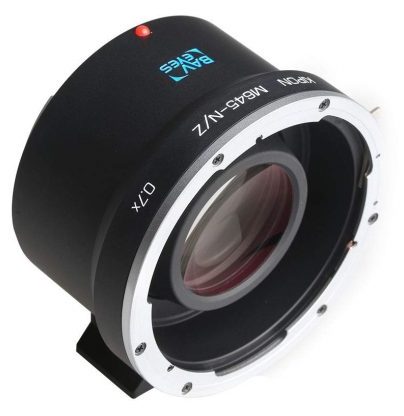 Nikon and Canon both released new lens mounts to go with their new mirrorless cameras, the RF for Canon and the Z-mount for Nikon. Without a mirror within the body of the camera, mirrorless cameras have a much shorter flange depth allowing for some lens innovation and wider apertures. In Nikon’s case, the Z-mount has a 65% shorter flange distance, measuring 16mm. According to Nikon, “the Z mount itself makes much of this possible with a 17% larger inner diameter than the F mount, enabling the use of more advanced optics and lens designs, including ultra-fast f/0.95 options.”
Nikon and Canon both released new lens mounts to go with their new mirrorless cameras, the RF for Canon and the Z-mount for Nikon. Without a mirror within the body of the camera, mirrorless cameras have a much shorter flange depth allowing for some lens innovation and wider apertures. In Nikon’s case, the Z-mount has a 65% shorter flange distance, measuring 16mm. According to Nikon, “the Z mount itself makes much of this possible with a 17% larger inner diameter than the F mount, enabling the use of more advanced optics and lens designs, including ultra-fast f/0.95 options.”
What I experienced in my long time with the Nikon Z6, the lenses were small and the whole set-up, lens, and camera were light-weight and easy to store, pull out, and use quickly. Additionally, the 16mm flange distance means just about any lens ever made may be adapted onto the Z-mount. Focal reducers for Medium Format lenses may also be used. The Kipon Focal reducer immediately came to my mind. Kipon has 4 different focal reducers Nikon Z6 shooters can use. Why do you care? Why do I care? Full-Frame UHD video is great and all, but I may want to shooter UHD Medium Format like footage, if possible. I know when my wife, an avid Nikon shooter, learned of this feature her eyes lit up with excitement.
- Baveyes Pentax645-Nikon Z 0.7x
- Baveyes Pentax67-Nikon Z 0.7x
- Baveyes MAMIYA645-Nikon Z 0.7x
- Baveyes Hasselblad V-Nikon Z 0.7x

A vintage Nikkor 43-86mm on the Nikon Z6 via the FTZ adapter
Shooting UHD Video on the Nikon
This is why I am here, the full-frame video. Is the full-frame UHD video good enough from the Nikon Z6, or are we just wasting our time here? No, this is not a waste of time. Not in the least. I found the UHD full-frame video out of the Nikon z6 to be very solid. Maybe I am being too conservative here. I thought the dynamic range, when shooting N-Log gamma Nikon’s log profile, was close to many higher-end cameras’ log footage.
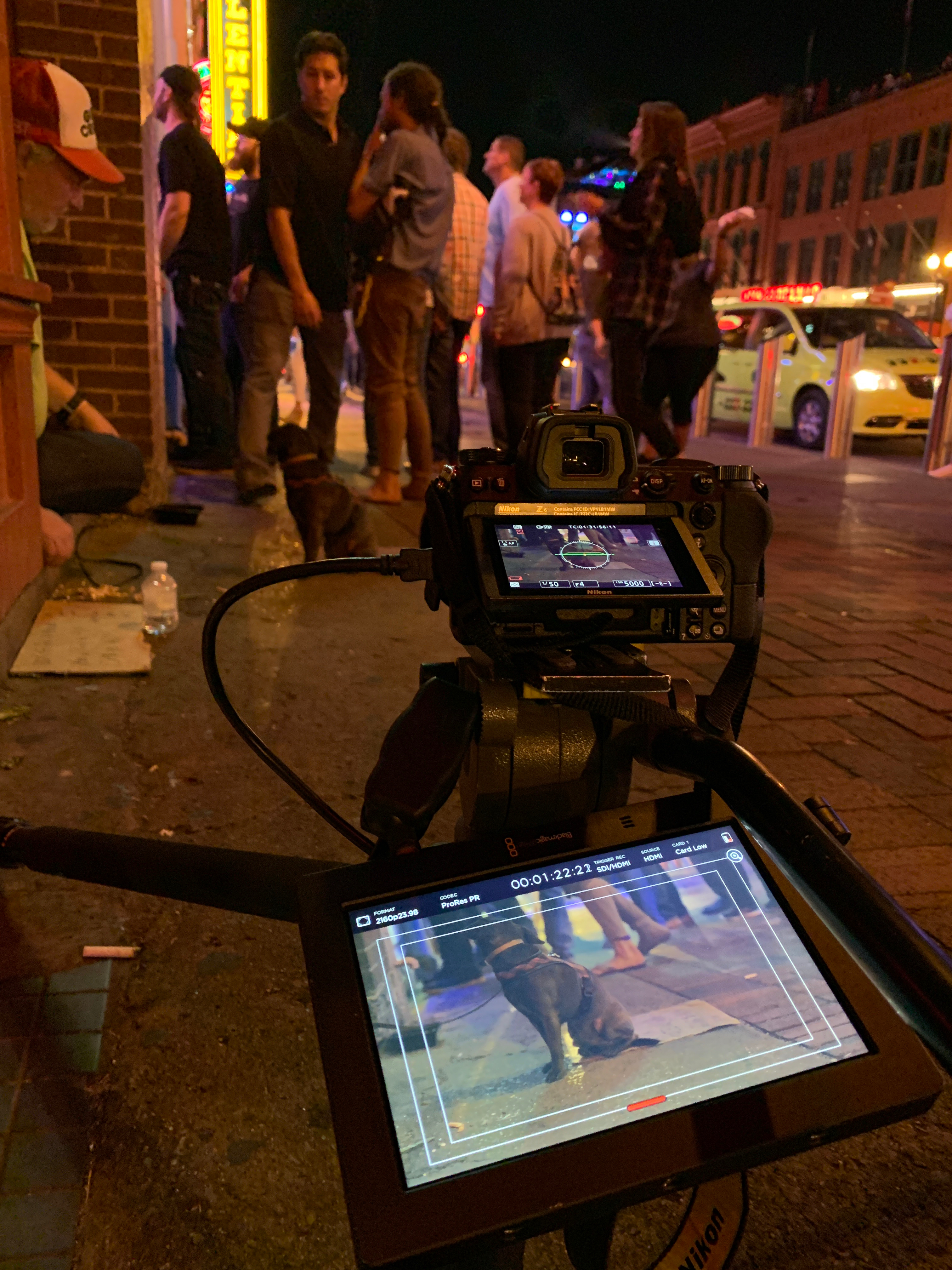
The one thing missing? “Video recording is possible at UHD 4K (3840 x 2160) using either the full-frame area or a DX (Super 35mm mode) crop area in 30p, 25, or 24p frame rates,” says Nikon. I wished the Nikon Z6 had a higher frame rate option. Even if the Nikon Z6 had 48 frames per second as an option that may be good enough for me. Then in 1080p video recording is supported up to 120 fps. The examples I have seen of 120 fps in HD looked great. And, I’ll be honest with myself, I am rarely asked to deliver a project in 4K. I shoot 4K or UHD for myself all the time. Your experience may be completely different. You may need 120 fps in 4K and then you will likely need a different camera.
Internal VS External Recording
Now, should you, the shooter, record in-camera or externally? Do yourself a favor and just choose an optional external recorder. When you dive into the Nikon Z6 menu and select N-Log and UHD and 10-bit you are going to need to record externally anyway. In my review, I used the Blackmagic Design Video Assist 4K recorder/monitor. It was a little big for the overall camera rig but it did the job well. Nikon also has a visual “assist” when shooting N-Log so you do not have to monitor and try to focus on a low-contrast image.
When shooting this way make sure you have an HDMI cable capable of handling 4K. Otherwise, you may run into some pixelation in the recorded image. I ran into this problem when I slapped on an older HDMI cable without thinking too much about it. Stupid, I know. Label those cords to keep the headache away.
More Video +
Other advanced video functionalities in the Nikon Z6 are the Electronic VR function for smooth handheld shooting. This can work with any lens because it is the sensor stabilized. Professional features also include focus peaking to help you capture critical focus when manually pulling your focus. Zebra Stripes is also available to help detect over-exposed areas within the frame. I tend to use Zebra Stripes to properly expose skin tones and it has yet to fail me. Audio recording can be handled using the built-in stereo microphone or an optional external mic can be added via the 3.5mm stereo jack for greater control over the audio quality, and monitoring is possible via the headphone jack.
UHD versus 4K
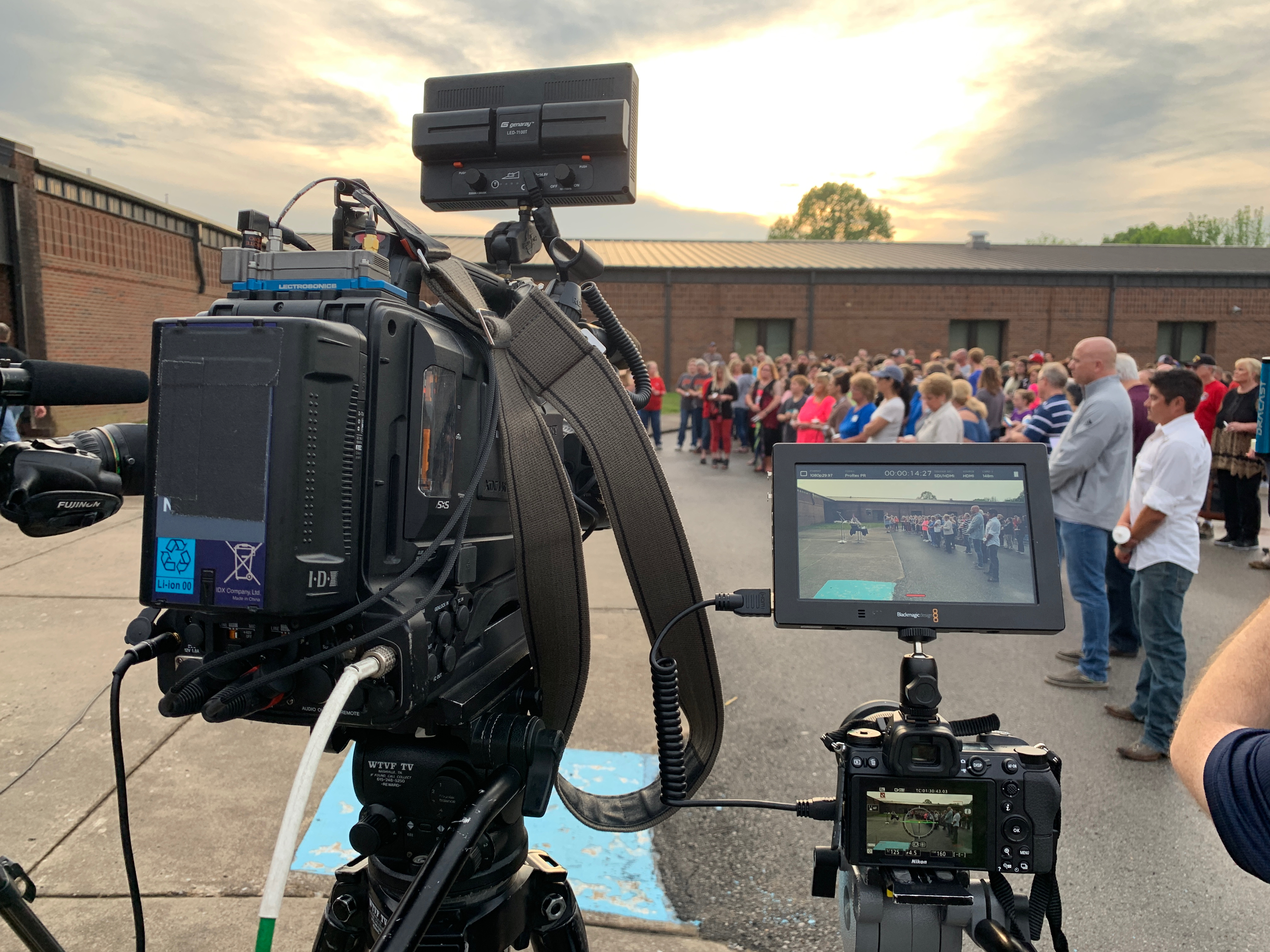
Yes, I wish the Nikon Z6 recorded 4096 x 2160 instead of the UHD 3860 x 2160. Just give us the larger format. This cannot be a big deal, right? Also, give us several different crops we can use with cinema lenses. I would consider a 4 x 3 anamorphic crop to be a big one to add to the Nikon z6. I’m not a camera engineer or a software engineer but I am a shooter and I could see myself wanting these features. The fewer the compromises the better, in my world. Do not hold back Nikon.
Image Body Image Stabilization (IBIS)
The built-in 5-axis sensor-shift Vibration Reduction mechanism for up to 5 stops of stabilization regardless of the lens used is wonderful. We used many of my wife’s Nikon G and F lenses via the Nikon NTZ mount and having Vibration Reduction was so nice. In my mind, I kept thinking Medium Format, via Kipon focal reducer, and Vibration Reduction, a likely wonderful combination to use together. In this video from NAB, my team shot for PVC’s Scott Simmons the insert camera of the Blackmagic Design Edit Keyboard is the Nikon Z6 hand-held by Kamren. The IBIS seems to give the Nikon a floating feeling which seems to have reduced the little bumps and movements holding a camera in the hand may cause.
SnapBridge Connectivity
Built-in SnapBridge connectivity to enable seamless transfer of low-resolution imagery as well as remote shooting capabilities. BLE (Bluetooth Low Energy) and Wi-Fi enable communication between the camera and a smart device and, additionally, the mobile device can remotely trigger the shutter and display a live view image from the camera to enable working from a distance.
LCD Screen
This is what Nikon says about their LCD Screen, “A large 3.2″ 2.1m-dot LCD screen is available for bright, clear, and vivid image playback and live view shooting. The screen has a tilting design to benefit working from both high and low angles, and it is also a touchscreen for more intuitive operation, navigation, and settings control.” The LCD screen tilts up or down. I have seen some YouTubers complain the LCD screen does not swivel. I don’t care. I used the Nikon Z6 with a monitor/recorder and you can guess which one I watched the most. If using the LCD screen alone, it is bright enough to use outside. The touchscreen was fast and responsive.
EVF
Now, I have used some mirrorless cameras where the EVF was just down-right junk. Not the EVF on the Nikon Z6. I found the image to be exactly what the camera was seeing. The image was clear and bright and easy to use. I loved the EVF. It is way way better than some other brands.
Autofocus
As I write this post, Nikon updated the firmware on the Z6 to improve the eye autofocus on the camera. The autofocus I tested on the Z6 was good. I felt like the camera kept most objects in focus well when I shot video. The only time the camera, with the older firmware, struggled was when a sizable object impeded upon the zone of focus. The new firmware improves upon this feature.
When shooting still images, Angela, my wife, and I both saw the focus occasionally fall a bit in front of the subject. This usually meant the eyelashes instead of the pupil was in focus. From my understanding, the new firmware also fixed this front focusing issue. Could we have been the “operator error” cause of a front focusing issue? Of course, we could be to blame. The Nikon Z6 is a feature-rich camera and while we had the review camera for awhile we still could have been in our way. I will touch more on the Still Photography side of the Nikon Z6 in a future post. There I will dive deep into using the Nikon at NAB 2019, Cine Gear Expo 2019, and every day.
N-log versus Rec 709
If I can make a single recommendation about the Nikon Z6 it is this, shoot N-log at 10-bit. As a shooter, you will be much more pleased with the camera and how it performs. Like many mirrorless cameras, the Nikon Z6 offers up an array of picture profiles. I find the abyss of different picture profiles a losing game for me. I just end up chasing my image when I know I am going to edit and color in DaVinci Resolve. I have learned to just dial in a “look” in Resolve. For me, I just want the best and most raw material a camera can deliver, essentially zero compromises.
Lenses
Nikkor lenses for the Z6! Good lord Nikon has made every damn lens and all those lenses can work on the Nikon Z6 via the FTZ lens mount. This is brilliant. Then there are the new Nikkor Z lenses made just for the Nikon Z6 and Z7. I will dive into these new lenses in a dedicated post.
Based on my limited experience, review period, with the Nikon Z-series cameras and lenses, I have to say that I was quite impressed by how smooth focusing felt when using Z mount lenses. I did not experience any loss of focus, focus jumping/skipping or other related problems I have previously seen on other systems. Each lens had a longer focus throw than I remember DSLR style lenses having. I could be wrong, and my memory may be playing tricks on me. I fell in love with the 35mm prime and Nikon’s 105 f1.4 lens, which is a g-mount but works via the FTZ adapter.
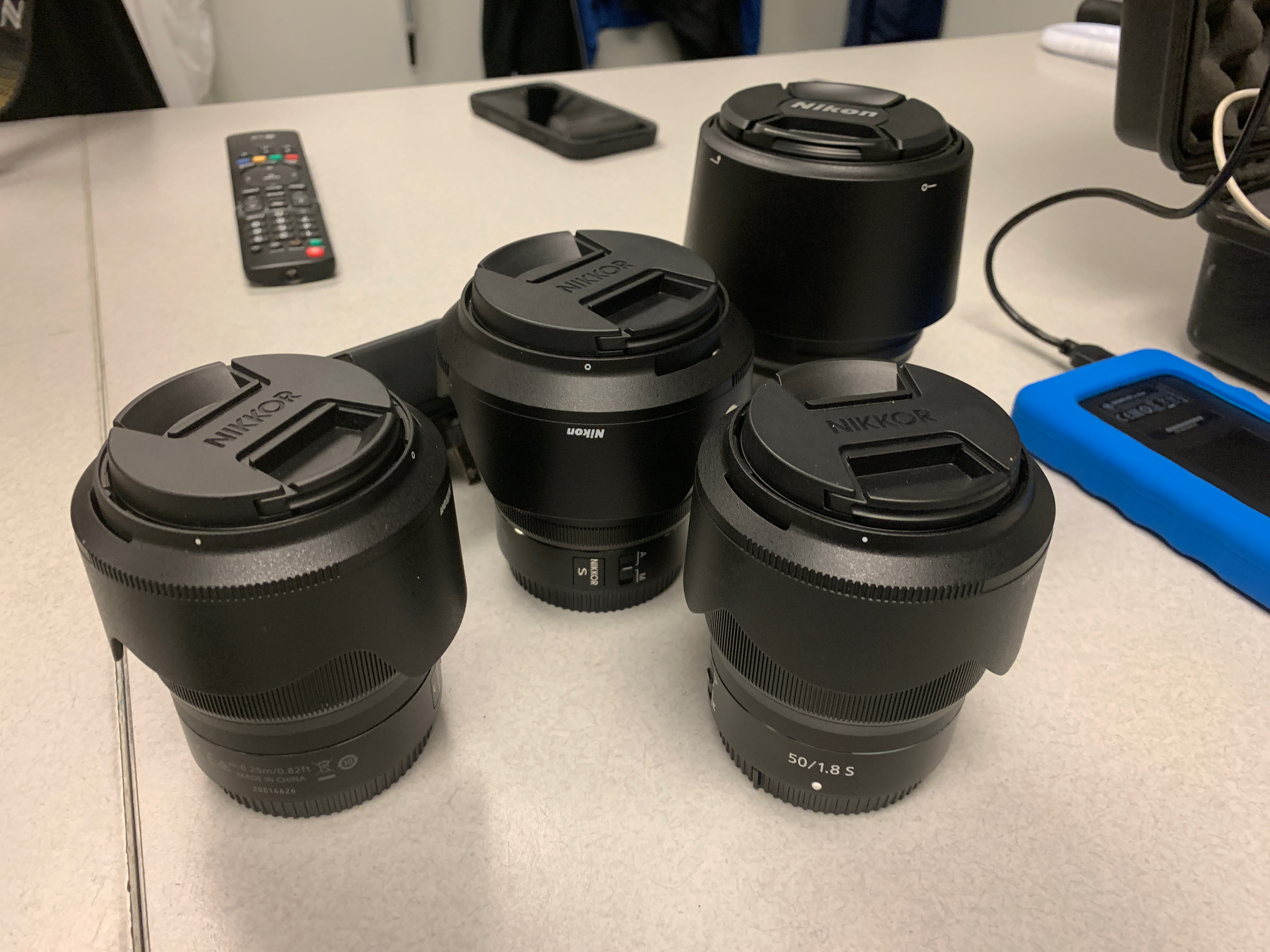
Accessories like power, evf’s, and rigs
Here is my overwhelming thought about small cameras, the camera can be as small or as large as you need it to be. I prefer larger cameras so I prefer to build up a Nikon Z6 into a larger filmmaking tool more useful for my needs. I prefer an EVF, a cage with a rail system to hold larger lenses. But then there is this shooter in me who wants a rig to be light, fast, and versatile and one cannot deny the Nikon Z6 fits this role very well too.
Overall thoughts
If you have a ton of Nikon glass in your equipment closest. If you love a cinematic large-format image. If you love a great electronic viewfinder with nearly zero compromises. If you love a set of cinematic prime lenses. If you love any of these things then the Nikon Z6 may be for you.

Filmtools
Filmmakers go-to destination for pre-production, production & post production equipment!
Shop Now